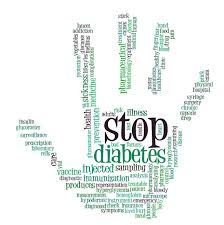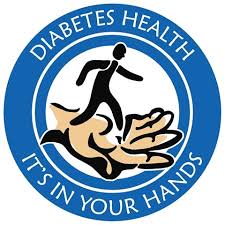Type 2 Diabetes: Symptoms, Causes, Risk Factors & A Natural Cure
 Type 2 diabetes, which is also known as noninsulin-dependent diabetes or adult-onset, is a severe condition that modifies the way your body metabolizes sugar (glucose), which is the body’s most important source of fuel.
Type 2 diabetes, which is also known as noninsulin-dependent diabetes or adult-onset, is a severe condition that modifies the way your body metabolizes sugar (glucose), which is the body’s most important source of fuel.
If you have type 2 diabetes, your body will either be resistant to the effects of insulin (Insulin is a hormone that controls the movement of sugar into your cells) or will not produce enough insulin for you to maintain a normal glucose level.
It is more common in adults and it increasingly affects children as a result of the increment in childhood obesity. There is a known natural way you can reverse your type 2 diabetes (which I will talk about later in this article). You can also manage this condition by eating well, working out and keeping a healthy weight. Sometimes diet and workout aren’t enough to manage your blood sugar very well. In this case, you may need diabetes medications or insulin therapy.
Type 2 Diabetes Symptoms
The signs and symptoms of type 2 diabetes usually develop at a very slow rate. In fact, you can have it for years and not know you have it. Therefore it is essential to lookout for the following symptoms:
- Increased thirst and repeated urination: High amount of sugar building up in your bloodstream requires high amount of fluid from the tissues. This may cause frequent thirst. As a result of this, you may drink as well as urinate more than usual.
- Frequent hunger: The lack of enough insulin to help
 move sugar into your cells will make your muscles and organs lack energy. This triggers intense and frequent hunger.
move sugar into your cells will make your muscles and organs lack energy. This triggers intense and frequent hunger. - Weight loss: Even though you eat more than usual to relieve hunger, you may still lose weight. The inability to metabolize glucose causes the body to make use of alternative fuels stored in the muscle and fat. Calories lost as high amount of glucose glucose is released in the urine.
- Exhaustion: If your cells don’t have enough sugar, fatigue would set in and you may become tired as well as irritable.
- Blurred vision. Excess blood sugar causes fluid to be pulled from the lenses of your eyes. This may have a huge impact on your ability to focus.
- Slow-healing sores or recurrent infections. This condition also affects your ability to heal and fight infections.
- Sections of darkened skin. Some individuals with this medical condition have areas of dark, velvety skin in certain parts of their bodies (usually in the armpits and neck). This condition, which is known as acanthosis nigricans, may be a sign of insulin resistance.
When should I see a doctor?
You should see a doctor when you notice any of the type 2 diabetes symptoms.
Type 2 Diabetes Causes
Type 2 diabetes arises when the pancreas stops manufacturing enough insulin or when the body becomes resistant to insulin. The reason this happens is not known yet, although genetics factors as well as environmental factors, like too much weight and inactivity, seem to be contributing factors.
How does insulin work?
Insulin is a hormone that comes from the pancreas gland located at the back and below the stomach. The pancreas produces insulin into the bloodstream. The insulin then circulates, allowing sugar to enter the cells. Insulin reduces the amount of sugar in the bloodstream. If your blood sugar level drops, the secretion of insulin from your pancreas does the same.
Risk factors
Many researchers don’t understand why some individuals develop type 2 diabetes and some don’t. However, it is clear that certain factors increase the risk of type 2 diabetes, including:
- Weight. Excess weight is a primary risk factor for type 2 diabetes. If your body has more fatty tissue, your cells will become more resistant to insulin. However, you don’t necessarily need to be overweight to have it.
- Distribution of Fat: Your risk of type 2 diabetes is very high if your body stores fat primarily in your abdomen. But if your body stores fat elsewhere, such as your hips and thighs you are not at risk.
- Inactivity: Your risk of type 2 diabetes is also greater when you are less active. Physical activity helps in controlling your weight, uses up glucose as energy and also helps in making your cells more sensitive to insulin.
- Family history: Your risk of having this condition is greater if your parent, sibling or any of your relative has type 2 diabetes.
- Race: Although the reason is not known, people of particular races such as blacks, American Indians, Hispanics and Asian-Americans have more likelihood to develop type 2 diabetes than whites are.
- Age: The risk of type 2 diabetes becomes greater as you age, most especially after age 45. This is due to the fact that people tend to exercise less, lose muscle mass and gain more weight as they grow older. Although the condition is also increasing severely among children, adolescents as well as younger adults.
- Pre-diabetes: This is when your blood sugar level is higher than it should be, but not yet high enough for it to be classified as diabetes. If left untreated, pre-diabetes develops to type 2 diabetes.
- Gestational diabetes: If you had gestational diabetes when you were pregnant, your risk of having type 2 diabetes is great. Also, if you gave birth to a baby that weighs more than 9 pounds (4 kilograms), your risk of type 2 diabetes is high.
- Polycystic Ovarian Syndrome. This is for women, this is a common condition characterized by irregular menstrual periods, increased hair growth as well as obesity. It also increases the risk of diabetes.
A Natural Cure for Type 2 Diabetes
A natural cure for type 2 diabetes has been discovered. It was  discovered by David Andrew who has decided to share his solution with individuals with similar conditions. He called it The Diabetes Destroyer Program. The Diabetes Destroyer program is a natural step-by-step solution guide that reveals how you can reverse type 2 diabetes and pre-diabetes in as little as 7 days. In this treatment solution, you will get tricks and tips that will help you to increase your insulin production and also help to decrease your sugar level. Diabetes Destroyer guide gives a short term treatment solution for diabetes (3months) as well as a long-term treatment solution.
discovered by David Andrew who has decided to share his solution with individuals with similar conditions. He called it The Diabetes Destroyer Program. The Diabetes Destroyer program is a natural step-by-step solution guide that reveals how you can reverse type 2 diabetes and pre-diabetes in as little as 7 days. In this treatment solution, you will get tricks and tips that will help you to increase your insulin production and also help to decrease your sugar level. Diabetes Destroyer guide gives a short term treatment solution for diabetes (3months) as well as a long-term treatment solution.